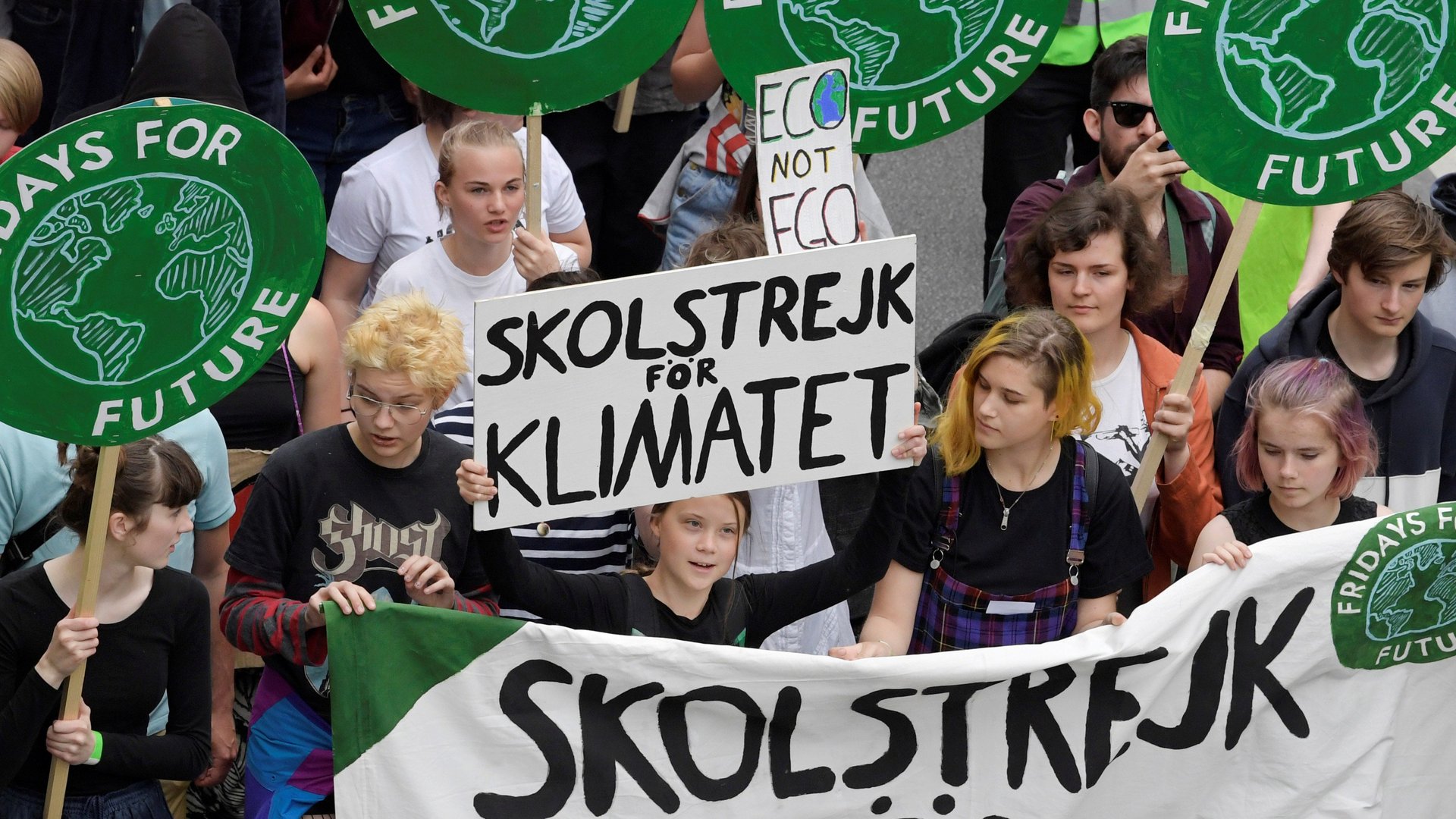The Race to Zero Emissions: A fresh new start
Hello Quartz readers!

Hello Quartz readers!
Welcome to my weekly newsletter on global efforts to tackle the climate crisis. Each Monday, I’ll tell you about happenings over the past week that helped or harmed the world’s attempt to cut greenhouse-gas emissions to zero. On occasion, I’ll also send you short essays on things I’m obsessed with.

🔽 Decreases emissions
Canadian startup Carbon Engineering and US oil company Occidental Petroleum have begun engineering and design work on scaling up a technology to capture carbon dioxide from the air—aka negative emissions. When completed in 2021 or 2022, the plant will be the world’s largest application of a technology that scientists deem necessary to hit climate goals, trapping underground as much as 500,000 metric tons of carbon dioxide each year.
In January, Germany agreed to end its use of coal by 2038 in a bid to meet climate goals. This week, the government announced plans to spend €40 billion ($45 billion) stimulating jobs and growth in coal mining regions that are bound to suffer the most in the transition. Mining giant BHP has warned investors that coal could be phased out globally “sooner than expected.”
A growing number of travelers are giving up flying. In Sweden, where the movement has taken off, a new term has emerged: flygskam, meaning “flight shame.” The country saw the number of passengers at airports drop in 2018, while the number of train travelers reached a new record.
As of 2018, for the first time, India is spending more on building solar and wind power than on fossil-fuel power. India’s prime minister, Narendra Modi, who was this week re-elected for a second term, is bullish on renewable energy. In 2015, he committed the country to building 175 GW of solar and wind capacity by 2022—about four times as much as the UK’s current renewable-energy capacity. India appears to be on track to hit the goal.
Countries in Africa, including Tanzania, Kenya, and Rwanda, are leading the world in plastic-bag bans. A UN environmental study found that such bans are proving effective: They help wildlife live in cleaner surroundings, cut air pollution (when the waste is burned), and reduce greenhouse-gas emissions (resulting from oil’s conversion to plastic).
Stats to remember
As of May 22, the concentration of carbon dioxide in the atmosphere was 414.58 ppm. Before the industrial revolution, that stood at 280 ppm. One way to keep global heating to “well below” 2°C—the goal set under the Paris climate agreement—requires not hitting 450 ppm.

0️⃣ Net-zero (for now)
Children across the world took to streets this week to protest inaction on the climate crisis. With events in 110 countries and 1,400 cities, as many as 1.4 million students are estimated to be involved. Started by 16-year-old Swedish student Greta Thunberg, the protests continue to gain momentum.
The US Environmental Protection Agency is looking to change how it calculates deaths caused by air pollution—a move questioned by many experts—and use the changes to defend rollbacks of air-pollution regulations.
Member countries of the EU vote this week to elect new members of the European parliament. Green parties are hoping the increased attention to the climate crisis may swing voters their way. These parties currently hold 52 out of 751 seats, and are expected to gain five more seats after the election.
Seventy major companies, including Pepsi, Johnson & Johnson, Tesla, and General Mills, met US lawmakers this week to push for a carbon tax. Chris Coons, a Democrat senator, promised to introduce a bipartisan bill soon.
Facts that matter
The climate crisis is made worse by the methane that cows belch and fart. The belches, however, release about nine times as much methane as the farts.

🔼 Increases emissions
The growing levels of methane in the atmosphere will make meeting Paris climate goals harder. The sources are likely the world’s growing hunger for meat and increased leaks from growing natural-gas use. Although shorter lived, methane is tens of times more effective at trapping heat than carbon dioxide. Scientists have developed new materials to convert methane in the atmosphere into carbon dioxide—which if scaled up would have the net effect of cutting the amount of heat trapped.
Amazon shareholders voted down a climate resolution that would have required the company to develop plans to deal with extreme weather events and cut fossil-fuel use. Unlike most activist shareholder resolutions on climate, which are proposed by charities, some 7,500 of Amazon’s own employees—who are partly paid in company stock—created the resolution.
Carbon credits for preserving forests almost never work. An investigation found that there are no robust ways to ensure paying for a metric ton of carbon dioxide means that amount of carbon will indeed be captured by trees and remain sequestered for 100 years—the stipulated time for the offsets to have the effects paid for.
The mysterious source of growing chlorofluorocarbon emissions is in China. CFC gas is responsible for chipping away at the ozone layer that protects Earthlings from harmful ultraviolet radiation. It is also, by far, the most potent greenhouse gas. The Chinese government has vowed to crack down on its illegal use.
BlackRock, which controls $6.5 trillion in assets, has been accused of dragging its feet on the climate crisis. It has among the world’s largest coal and oil holdings. While the firm believes that climate change poses long-term risk to investments, it backs less than 25% of shareholder resolutions on climate.
My best wishes for a productive week. Please send any captured carbon dioxide, BlackRock shares, or belching cows to [email protected].